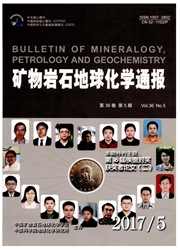

 中文摘要:
中文摘要:
自1999年起,我国陆续开展南海天然气水合物调查及勘探研究工作。2007年5月在南海神狐海域成功钻获天然气水合物实物样品,标志着天然气水合物找矿工作的重大突破,显示出南海丰富的天然气水合物资源前景。本文综述了南海天然气水合物发育的有利地质条件,赋存的地质、地球物理和地球化学证据,水合物分布和发育特征及成藏模式,指出目前研究工作中还存在的一些问题:勘探实践获得的天然气水合物地球物理和地球化学响应与实际存在水合物并非一一对应;大多数研究只针对水合物形成的某一方面的条件开展(如气源、流体运移体系等);同时,水合物稳定带和水合物资源量估算均较为粗略。因此,明确天然气水合物地质、地球物理和地球化学响应机理、开展水合物成藏系统和成藏动力学研究以及更加精确且符合实际的估算水合物资源量将会是今后南海天然气水合物研究的重点。
 英文摘要:
英文摘要:
Investigations and researches of gas hydrate in the South China Sea have carried out by Chinese scientists since 1999 and have achieved many significant progresses. In May, 2007, gas hydrate samples were obtained in the gas hydrate drilling expedition in the Shenhu area of the northern South China Sea, indicating a major breakthrough of gas hydrate exploration and good resource prospects of gas hydrate in the South China Sea. In this paper, we re- view the favorable geological condition for the formation of gas hydrate, geological, geophysical and geochemical proxies for the occurrence of gas hydrate, as well as the distribution and the accumulation model of gas hydrate in the South China Sea in the last decade. This review also points out several key problems in current gas hydrate re- search works, for example, there is inconsistency between the geophysical and the geochemical response mechanism of gas hydrate and the occurrence of gas hydrate; most studies only focus on one aspect of the formation conditions of gas hydrate; the estimation of stability zone and resources of gas hydrate is relatively rough. Therefore, we pro- pose that future study should focus on clarifying the geological, geophysical, and geochemical response mechanisms of gas hydrate, and that carry out research on the reservoir formation systems to evaluate the gas hydrate resource more accurately and realistically.
 同期刊论文项目
同期刊论文项目
 同项目期刊论文
同项目期刊论文
 期刊信息
期刊信息
